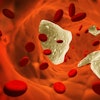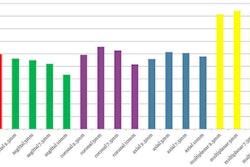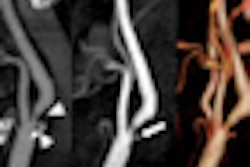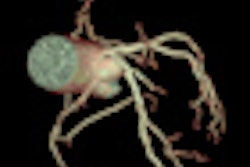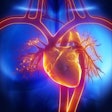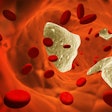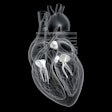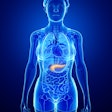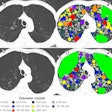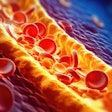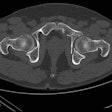
VIENNA - CT plays a critical role as an imaging biomarker for pulmonary nodules, and it can also help determine patient management, according to Dr. Cornelia Schaefer-Prokop, associate professor of radiology at Meander Medical Center, Amersfoort, the Netherlands.
Pulmonary nodules are very common and represent an everyday challenge. New techniques are detecting more lesions, but most nodules are benign.
"Missed lung cancer is one of the most frequent causes of malpractice lawsuits in radiology," she said in yesterday's Josef Lissner Honorary Lecture. "Nodule management remains a challenge that has to weigh risk versus cost."
The estimated prevalence of lung nodules based on screening studies is approximately 50% at baseline, although they are present in around 88% of heavy smokers older than 50 years. Most nodules are small, and the majority (between 56% and 72%) are less than 5 mm in diameter, she explained.
 Dr. Cornelia Schaefer-Prokop, associate professor of radiology at Meander Medical Center, Amersfoort, the Netherlands. Image provided by ESR.
Dr. Cornelia Schaefer-Prokop, associate professor of radiology at Meander Medical Center, Amersfoort, the Netherlands. Image provided by ESR.For benign nodules, the traditional criteria include resolution, central/diffuse calcification, fat components, and lack of growth over two years. In cases of infection/postinfection, linear/nonspherical appearance is important, as is a cluster of nodules without a predominance. These criteria do not help because they refer to the minority of patients, and radiologists are still faced with a large number of patients having solitary or multiple small solid nodules.
In typical perifissural nodules, there is a very low likelihood for malignancy, and very probably they represent lymph nodes, noted Schaefer-Prokop. No follow-up is recommended. Malignant perifissural nodules are usually easy to differentiate, and mainly occur in patients with known tumors.
With part-solid nodules, as with solid nodules, the challenge is to discriminate between benign and malignant lesions. Part-solid nodules with characteristic findings of transience can be safely followed up in a short-term period without immediate intervention, even in nodules larger than 1 cm in diameter.
To determine significant growth in subsolid nodules, she recommended using the correct scan parameters, in addition to thin sections and overlapping reconstruction.
"Be aware of the limitations of diameter measurements," she advised. "Use the same volumetry software for baseline/follow-up. The rule of thumb is that significant growth must be greater than 25%."
Typical perifissural nodules represent benign lymph nodes, and a solid component in persistent subsolid nodules can affect outcome. Morphology predicts the likelihood of malignancy (lobulation, spiculation, nonspherical shape, no attachment), while growth rate predicts biologic behavior.
For successful nodule management, do not follow perifissural nodules, and do not follow smooth small nodules (less than 4-5 mm), unless metastases are suspected, Schaefer-Prokop pointed out. Follow indeterminate (5-10 mm) or subsolid lesions, do not biopsy or use PET for subsolid nodules, resect growing subsolid lesions, and biopsy/resect solid lesions.
Computer-aided detection and diagnosis will become indispensable for nodule identification, characterization, and volumetry/growth assessment, she predicted.
Originally published in ECR Today March 3, 2012.
Copyright © 2012 European Society of Radiology

